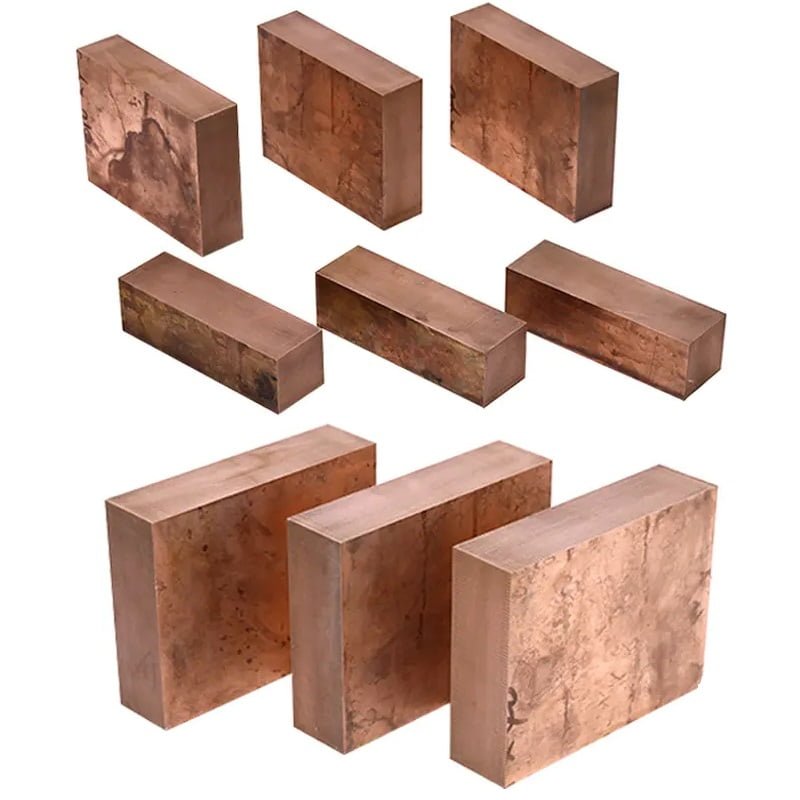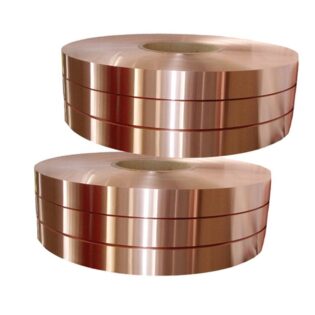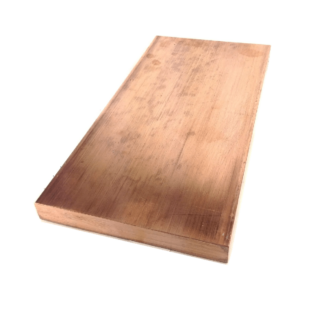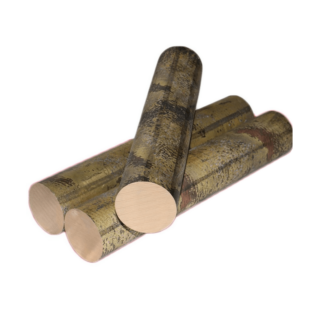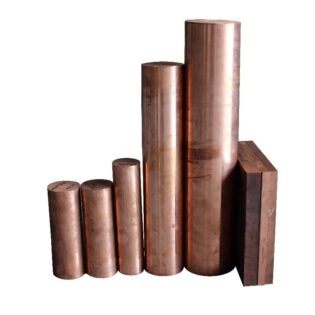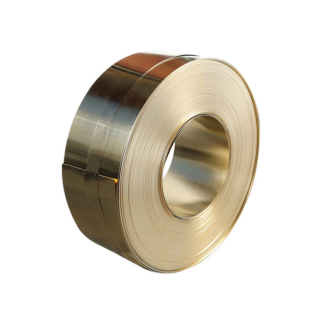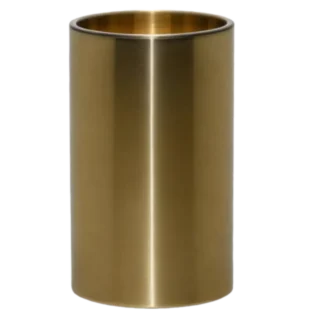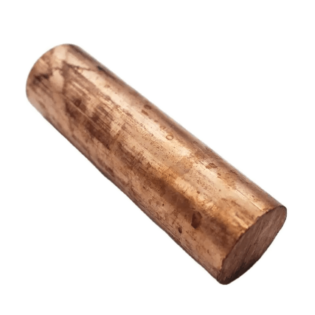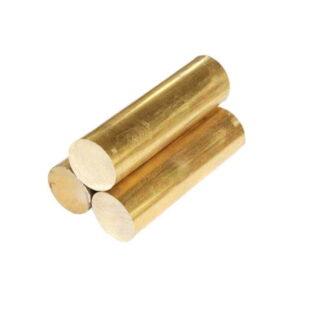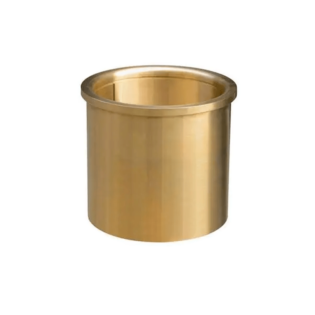Beryllium Copper description
Beryllium bronze with beryllium as the main element has a beryllium content of 0.2%~2% and a small amount of cobalt or nickel as the third element The alloy can be strengthened by heat treatment.
Beryllium bronze is an ideal elastic material with high conductivity and high strength, no magnetic resistance, spark resistance, wear resistance, corrosion resistance, fatigue resistance and stress relaxation Beryllium bronze castings are typically used as moulds for plastics or glass, resistance welding electrodes for petroleum, explosion-proof tools, submarine cable shields, etc. Beryllium bronze processing materials are typically used as flow carrier reed connectors, contact fasteners, spring springs and spiral springs, film boxes, bellows, and lead frames in electronic devices.
CuBe2 – UNS. C17200 Beryllium Copper Alloys
A bronze having beryllium as its principal alloy. It contains 1.7 ~ 2.5% beryllium and a small amount of nickel, chromium, titanium and other elements. After quenching and aging treatment, the strength limit can reach 1250 ~ 1500MPa, close to the level of medium strength steel. In quenching state plasticity is good, can be processed into a variety of semi – finished products. Beryllium bronze has a high hardness, elastic limit, fatigue limit and wear resistance, but also has good corrosion resistance, thermal conductivity and electrical conductivity, impact does not produce sparks, widely used as important elastic elements, wear parts and explosion-proof tools. Common grades are QBe2, QBe2.5, QBe1.7, QBe1.9 and so on.
Copper alloys is the leading products of LION Copper, Our beryllium copper alloys are of the top quality around China, and we are the leading professional China beryllium copper supplier and copper beryllium exporter, should you need the copper beryllium alloys, please feel free to contact us.
LION beryllium copper alloy are including the C17200 beryllium copper, C17300 free cutting beryllium copper,C17500 cobalt beryllium copper,C17510 nickel beryllium copper,CuCo1Ni1Be cobalt nickel copper beryllium.
LION are capable of supplying you with the shapes of beryllium copper bar,beryllium copper rods, beryllium copper flat bar,beryllium copper square bar,copper beryllium rectangular bar,beryllium copper hexagon bar,beryllium copper plate,beryllium copper sheet,beryllium copper strip,beryllium copper round strips,beryllium copper round wire,beryllium copper tubes,etc…
CuBe2 – UNS. C17200 Beryllium Copper Alloys
Details Chemical Composition Typical Physical Properties Mechanical Properties
International Specification RFQ
CuBe2Pb – UNS. C17300 Leaded Beryllium Copper Alloys
Details Chemical Composition Typical Physical Properties Mechanical Properties
International Specification RFQ
CuCo2Be – UNS. C17500 Cobalt Beryllium Copper Rods
Details Chemical Composition Typical Physical Properties Mechanical Properties
International Specification RFQ
CuNi2Be – UNS.C17510 Nickel Beryllium Copper Alloys
Details Chemical Composition Typical Physical Properties Mechanical Properties
International Specification RFQ
CuCo1Ni1Be – CW103C Cobalt Nickel Copper Beryllium Alloys
Details Chemical Composition Typical Physical Properties Mechanical Properties
International Specification RFQ
Beryllium Copper (BeCu) Classify
Beryllium bronze falls into two categories. According to the alloy composition, the beryllium content of 0.2% ~ 0.6% is high conductivity (electric, thermal) beryllium bronze; The high strength beryllium bronze with 1.6% ~ 2.0% beryllium content. According to the manufacturing process, it can be divided into casting beryllium bronze and deformed beryllium bronze. The international grade of beryllium bronze alloy is C. There are two kinds of deformed beryllium bronze: C17000, C17200 (high strength beryllium bronze) and C17500 (high conductivity beryllium bronze). The corresponding cast beryllium bronze are C82000, C82200 (high conductivity cast beryllium copper) and C82400, C82500, C82600, C82800 (high strength wear resistant cast beryllium copper). Brush Wellman is the largest manufacturer of beryllium copper alloy in the world. Its enterprise standards correspond to international standards and have certain authority. The history of producing beryllium bronze in China is almost synchronous with that of the former Soviet Union and the United States, but only high strength beryllium bronze QBe1.9, QBe2.0 and QBe1.7 are listed in the national standard. Other high-conductance beryllium bronzes or cast beryllium bronzes have been put into scale production according to the needs of the petroleum industry and the development of the defense industry.
Beryllium Copper (BeCu) Performance
Beryllium bronze with good comprehensive performance Its mechanical properties, namely the strength hardness, wear resistance and fatigue resistance among the top of the copper alloy The conductive thermal conductivity non-magnetic properties such as resistance to spark other copper cannot be compared Under the soft solid solution state strength and electrical conductivity of beryllium bronze are still in the low, strain hardening, strength increases, the conductivity is low After aging treatment, the strength and conductivity of beryllium bronze increase significantly.
The machinability, weldability and polishing properties of beryllium bronze are similar to those of general high copper alloy In order to improve the machinability of the alloy and adapt to the precision requirements of precision parts, a kind of high strength beryllium bronze (C17300) containing 0.2%~0.6% lead has been developed in various countries. Its performance is equivalent to that of C17200, but the cutting coefficient of the alloy is increased from 20% to 60%(free cutting brass is 100%).
Beryllium Copper (BeCu) Fabrication Processing
Beryllium bronze is a typical aging – strengthened alloy. The typical heat treatment process of high strength beryllium bronze is to make the solute atoms of beryllium fully dissolve in the copper matrix at 760 ~ 830℃ (at least 60min per 25mm thick plate) to form a face centered cubic lattice α phase supersaturated solid solution. γ ‘phase (CuBe2 metastable phase) was formed after holding at 320 ~ 340℃ for 2 ~ 3h. This phase is in conjunction with the matrix, resulting in a stress field that strengthens the matrix. The typical heat treatment process of high conductivity beryllium bronze is to complete the solution process by holding the temperature at 900 ~ 950℃ for a period of time, followed by holding the temperature at 450 ~ 480℃ for 2 ~ 4h to realize the precipitation process. Due to the addition of more cobalt or nickel in the alloy, the dispersion strengthening particles are mostly intermetallic compounds formed by cobalt or nickel and beryllium. In order to further improve the strength of the alloy, cold working is usually carried out after solution heat treatment and before aging heat treatment to achieve the comprehensive strengthening effect of cold hardening and aging hardening. The cold working degree is generally not more than 37%.Solution heat treatment should generally be carried out by the alloy manufacturer. The user will be after the solid solution heat treatment and cold rolled strip into parts, self aging heat treatment, to obtain high strength spring components. In recent years, the United States has developed a beryllium copper manufacturer completes the aging treatment of the strip, the customer can be directly punched into parts. After various processes of beryllium bronze, the letter representation of the alloy state in Europe and America is: A stands for annealed state. The alloy is in the soft state, easy to press and form, and needs the next cold processing or direct aging and strengthening treatment. H indicates the work hardening state (hard), take the cold rolled sheet as an example, the cold working degree of 37% is full hard state (H), the cold working degree of 21% is half hard state (1/2h), the cold working degree of 11% is 1/4 hard state (1/4h), the user can choose the appropriate soft and hard state according to the difficulty of the shape of the parts to be pressed. T represents the state of aging and enhanced heat treatment. If the process of comprehensive strengthening of deformation and aging is adopted, the state is represented by HT.
Beryllium Copper (BeCu) Safety Protection
The mass percentage of beryllium in beryllium bronze alloys is 2%, but the atomic percentage is 9.0122%. Beryllium oxide (BeO) is formed during high-temperature operations such as smelting, casting, heat treatment, welding, cutting machine processing, etc. Most of the beryllium oxide will be firmly attached to the surface of the original workpiece, but in the fierce movement such as cutting, polishing, welding and other operations, fine particles (less than 10μm) dust will be suspended in the air, if the operator inhaled excessive, will lead to “beryllium lung” occupational disease. Therefore, the above working environment must have a perfect directional exhaust device. Cutting, polishing and other processes must be carried out in a wet state with coolant. The U.S. Occupational Safety and Health Administration (OSHA) establishes a standard for conducting regular air sampling of the beryllium plant and its surrounding environment, with a minimum beryllium content of 2μg/m3 for workers working 8 hours per day. In order to reduce the pollution caused by beryllium copper, China and Japan have developed titanium with similar elasticity in recent years, which can be used as a good substitute for beryllium bronze in some workplaces.
